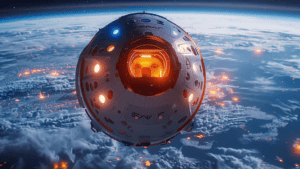
-
Boeing Starliner faces risks during re-entry, including excessive friction, heat shield failure, and loss of control.
-
The spacecraft will make an uncrewed return due to continued concerns with thrusters.
-
NASA and Boeing are confident in the spacecraft’s capabilities, with 27 of 28 thrusters operational.
Boeing’s Starliner spacecraft is set to return to Earth, marking the end of a mission plagued by technical issues. The spacecraft, which carried astronauts Sunita Williams and Barry Wilmore, was originally intended to last eight days but faced delays due to helium leaks and thruster malfunctions.
As the Starliner prepares for re-entry, NASA and Boeing engineers have acknowledged multiple risks. A too-steep re-entry angle could cause the heat shield to fail, while a too-shallow angle could leave the spacecraft stranded in orbit. Additionally, the failure of more thrusters could leave the spacecraft without control, putting the astronauts at risk.
Despite these risks, NASA and Boeing remain confident in the spacecraft’s capabilities. The Starliner will return valuable cargo from the ISS, including reusable oxygen tanks. The spacecraft is scheduled to land at White Sands Space Harbor in New Mexico on Friday, September 6, with NASA streaming the departure and landing live on YouTube.













